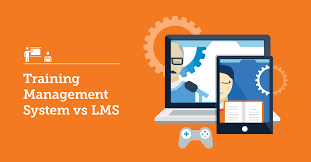With the business landscape evolving, companies are always seeking ways to improve their employee training initiatives. A popular and effective approach that has gained traction in recent times is the utilization of a Learning Management System (LMS). This system offers a user platform for creating, sharing, and monitoring training content. In this piece, we will delve into the advantages that an LMS brings to employee training programs.
1. Streamlined Content Organization
A key benefit of employing an LMS for employee training lies in its centralized content management capabilities. By using an LMS, training materials are housed in a location, simplifying accessibility and updates as necessary. This eradicates the need for document versions and ensures that all staff members have access to the most current information. LMS like Paycom has several advantages, as you can understand from the Paycom reviews, too.
2. Adaptability and Versatility
An LMS provides adaptability and versatility for employee training schemes. Whether your company comprises ten employees or thousands, an LMS can cater to any number of learners without compromising efficiency. It serves as a solution as your organization expands or increases its workforce.
Moreover, an LMS enables you to deliver training at any time and from any location. Employees can retrieve training resources from their computers or mobile devices, facilitating learning schedules while minimizing time constraints.
3. Customizable Learning Paths
Creating learning paths is an advantage of utilizing an LMS for employee training. Recognizing that not all employees possess the skill levels or job demands, tailoring training programs to meet needs becomes essential.
Through an LMS, organizations can design customized learning paths based on roles or departments. This approach ensures that employees receive training that caters to their requirements, leading to increased engagement and enhanced performance.
4. Automated Tracking and Reporting
Moreover, monitoring employee progress and evaluating the effectiveness of training initiatives can be challenging without the right tools. An LMS simplifies this process by offering automated tracking and reporting functionalities.
By leveraging an LMS, organizations can effortlessly track employee engagement levels, completion rates, and quiz and exam scores. This data provides insights into the efficacy of training programs and empowers decision-making based on concrete evidence for enhancement.
5. Gamification and Interactive Learning
Furthermore, fostering employee engagement is vital for the success of training endeavors. Incorporating gamification and interactive learning components within an LMS keeps employees motivated and deeply engaged in their learning journey.
Features like badges, leaderboards, and progress tracking integrated into learning elements enhance employee participation by transforming training activities into enjoyable experiences.
This not only boosts knowledge retention but also fosters a sense of healthy competition among employees, motivating them to strive for excellence in achieving their learning objectives.
6. Cost Efficient Solution
Integrating an LMS can offer a cost alternative compared to classroom-based training methods. By utilizing an LMS, you can eliminate the need for expenses related to travel, physical training materials, and instructor fees.
Moreover, because an LMS allows access from any location with an internet connection, it reduces the time employees spend away from their workstations during in-person training sessions. This results in enhanced productivity and efficiency across the organization.
7. Improved Communication
In addition to the aforementioned advantages, an LMS also encourages collaboration and communication among employees. An LMS facilitates interaction between learners and trainers regardless of their locations. Learners can pose queries, seek clarifications, or provide feedback within the platform, fostering a sense of community and promoting engagement.
Furthermore, many LMS platforms include discussion boards or forums where employees can engage with their colleagues. This opens avenues for learning, sharing practices, and exchanging ideas. By facilitating communication and collaboration, an LMS contributes to nurturing a learning environment within an organization.
Conclusion
In today’s age of technology, with the rise of remote and hybrid work, using a Learning Management System (LMS) for employee training comes with a range of advantages. The LMS offers content management learning paths and automated tracking, making the training process more efficient. Not only does an LMS provide scalability and flexibility, but it also includes gamification features that boost employee engagement. Considering its cost-effectiveness, it’s no surprise that more companies are turning to this tool to enhance their employee training initiatives. If you seek a method to train your employees while enhancing engagement and productivity, implementing an LMS could be the way!



